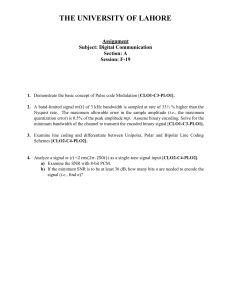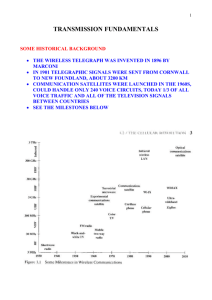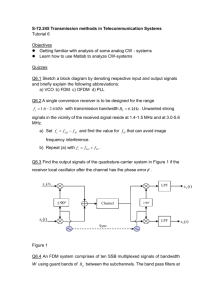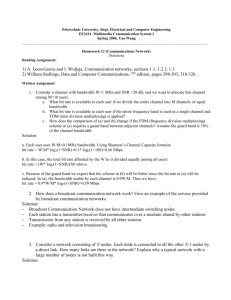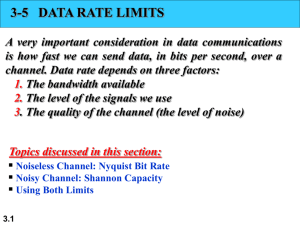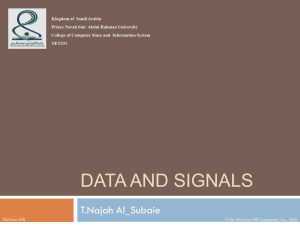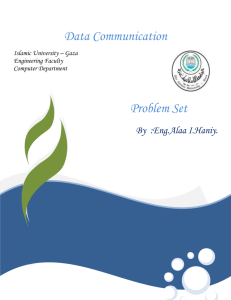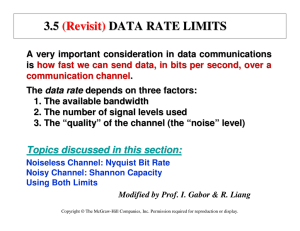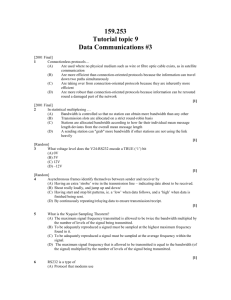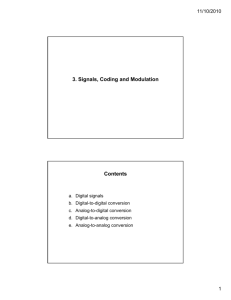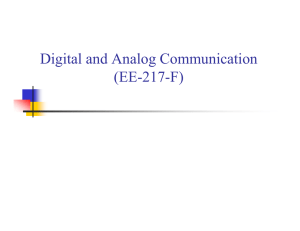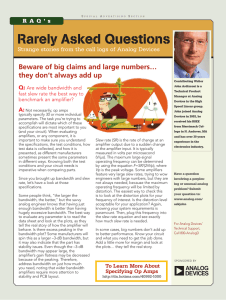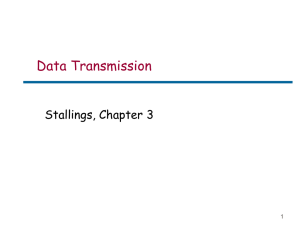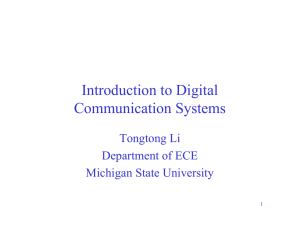Chapter 1 Summary
advertisement
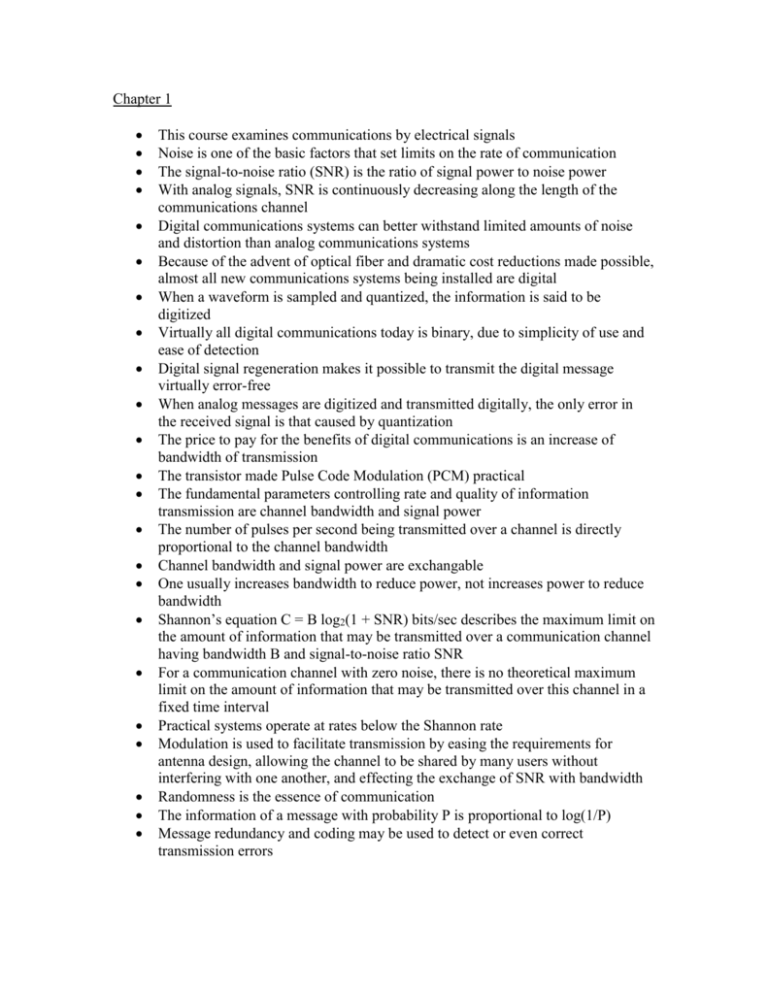
Chapter 1 This course examines communications by electrical signals Noise is one of the basic factors that set limits on the rate of communication The signal-to-noise ratio (SNR) is the ratio of signal power to noise power With analog signals, SNR is continuously decreasing along the length of the communications channel Digital communications systems can better withstand limited amounts of noise and distortion than analog communications systems Because of the advent of optical fiber and dramatic cost reductions made possible, almost all new communications systems being installed are digital When a waveform is sampled and quantized, the information is said to be digitized Virtually all digital communications today is binary, due to simplicity of use and ease of detection Digital signal regeneration makes it possible to transmit the digital message virtually error-free When analog messages are digitized and transmitted digitally, the only error in the received signal is that caused by quantization The price to pay for the benefits of digital communications is an increase of bandwidth of transmission The transistor made Pulse Code Modulation (PCM) practical The fundamental parameters controlling rate and quality of information transmission are channel bandwidth and signal power The number of pulses per second being transmitted over a channel is directly proportional to the channel bandwidth Channel bandwidth and signal power are exchangable One usually increases bandwidth to reduce power, not increases power to reduce bandwidth Shannon’s equation C = B log2(1 + SNR) bits/sec describes the maximum limit on the amount of information that may be transmitted over a communication channel having bandwidth B and signal-to-noise ratio SNR For a communication channel with zero noise, there is no theoretical maximum limit on the amount of information that may be transmitted over this channel in a fixed time interval Practical systems operate at rates below the Shannon rate Modulation is used to facilitate transmission by easing the requirements for antenna design, allowing the channel to be shared by many users without interfering with one another, and effecting the exchange of SNR with bandwidth Randomness is the essence of communication The information of a message with probability P is proportional to log(1/P) Message redundancy and coding may be used to detect or even correct transmission errors
![Analogue digital converter Assignment 01 [Updated] Spring 2020](http://s3.studylib.net/store/data/025357219_1-44789d49d8c096f173a635a9f4c20d9f-300x300.png)
